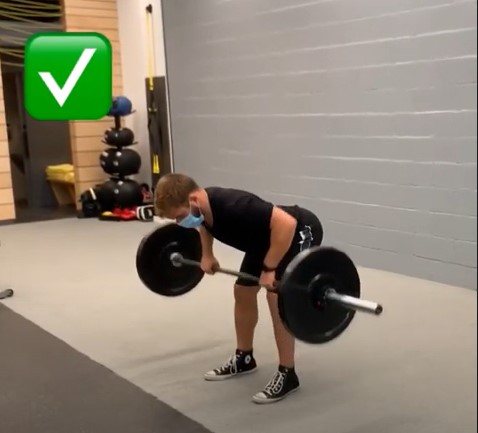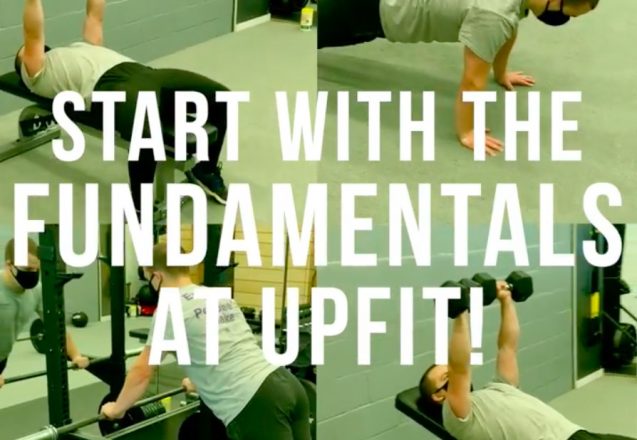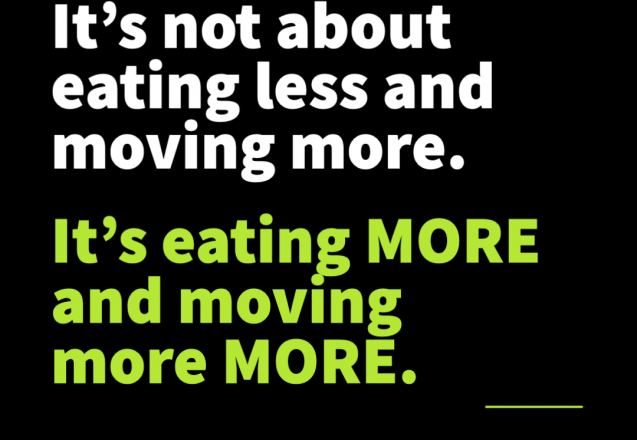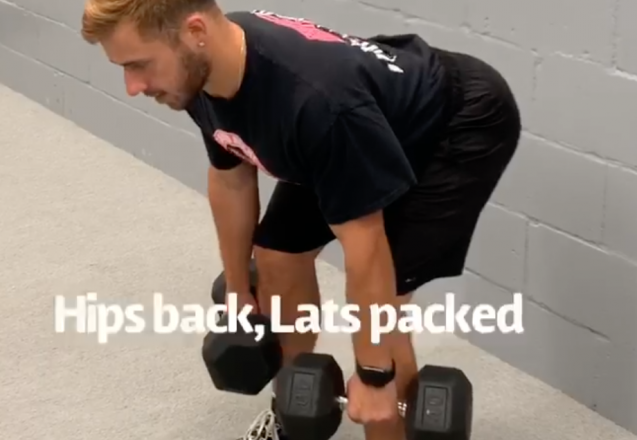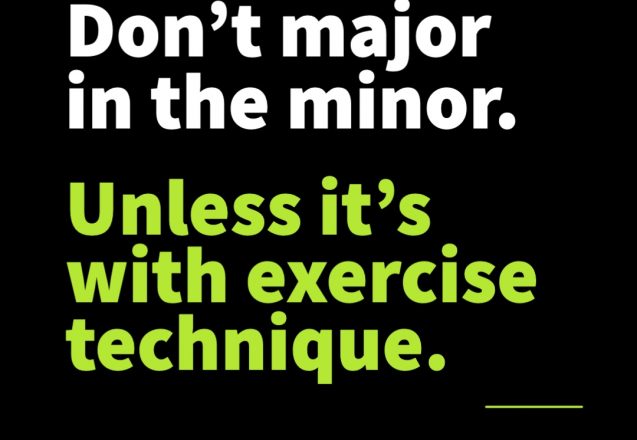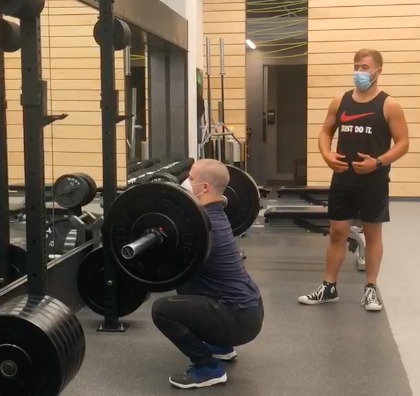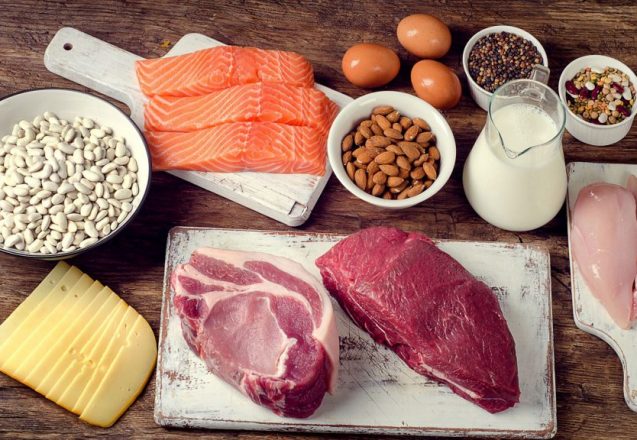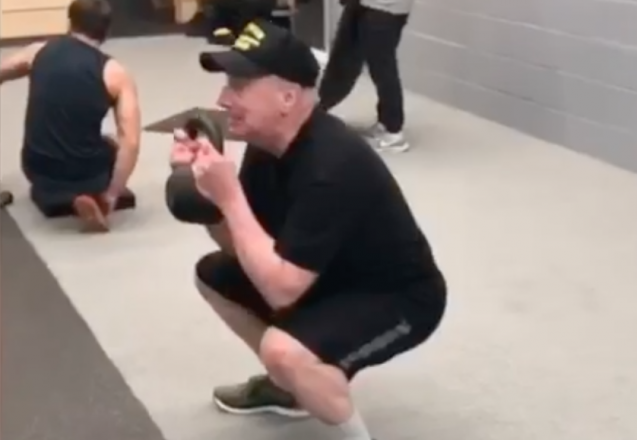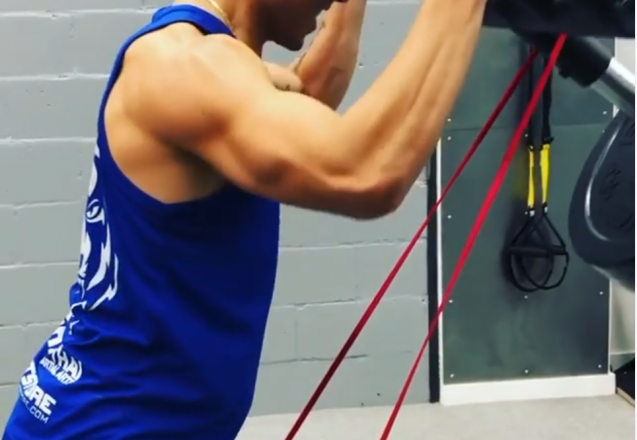Sick of Slouching? It’s Time to Build Your Back
Sick of Slouching? It’s Time to Build Your Back
Perfect Your Posture with These Movements
UpFit Training Academy
Jacob O’Connor, Brian Santanelli
Personal training and small group programs are often designed with the goal of improving muscular strength. As important as muscular strength is, maintaining a balance is perhaps just as essential. One of the most common strength imbalances we see is within the chest, shoulders, and upper back. It’s likely you or somebody you know suffers from this imbalance, associated with a rounding of the upper back and a slouching posture. This is likely caused by a tight chest and shoulders accompanied by a weak upper back comparatively speaking. This imbalance can lead to poor posture, decreases in sleep quality, and joint pain. Achieving proper muscular balance and posture can help us to feel more confident and comfortable, both on the inside and out. The best way to combat this imbalance is to stretch the muscles in the chest and front of the shoulders and to build a STRONG upper back!
You can find some of our favorite upper back strengthening exercises in our bilateral pull progression. We’ve incorporated some common technical errors along with the proper mechanics of the movements, we hope you enjoy and find this helpful!
The TRX row is a great movement used to increase upper back strength, hence why it’s used in so many personal training programs. This movement is easily progressed as the closer your feet are to the anchor the harder the movement becomes. It’s important to take the slack out of the straps before getting set into your first rep. Participants will lower the body away from the straps, before pulling the handles back towards the upper abs. A fist widths distance should be maintained between the body and the elbows. One of the most common errors seen with TRX movements is slouching of the hips, it’s important to keep the core engaged in order to maintain a rock solid posture throughout the movement!
TRX FACE PULL
The TRX face pull is a staple movement for improving posture in the upper back. Similar to the TRX row, the slack should be taken out of the straps before initiating the first rep. The elbows and shoulders should both be at a 90 degree angle at the top of the movement. Although the primary movers are in the upper back, it’s important to emphasize core activation to prevent those hips from slouching! There should be a command and control of the pace throughout the face pull.
SEATED BANDED ROW
The seated row can be done with bands or cables. The bands should be pulled towards the upper abs maintaining a fist width distance between the elbows and the body. The band should have tension throughout the entire movement, if you feel slack in the band you need to back it up!
The chest supported row is a simple movement that is easy to do wrong. The chest should be kept tall off the bench emphasizing extension of the upper back. Squeeze the mid back and bring dumbbells to the hip during the row. Like our other rows, elbows should be maintained at a fist widths distance from the body.
BENT OVER ROW
The bent over row is the most complex movement in our bilateral pull progression. This movement should only be done once proficiency of the hinge is obtained. The hinge position should be maintained throughout the movement while bracing the core and engaging the upper back. The bar should be pulled to the upper abs before lowering back to the starting position. Use the lats in order to control the bar and keep it from drifting away from the body. The bar should be going where you command it to, not the other way around!
Implementation of simple upper back strengthening exercises can go a long way to improving one’s muscular balance, posture, and standard of living. Whether your goal is to improve your health or achieve a kickass aesthetic, prioritizing the upper back is essential. Some may benefit from incorporating a few of these into a warm up period in order to prime the upper back. Others may be better off designating sessions that priorities upper back strength. We hope our progression improves your personal training and helps you live your best life!

